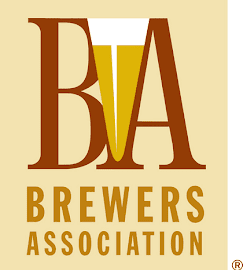[continued from Heavenly Beer - part 1]
Smithsonian lecture on the monastic tradition in brewing The featured speaker, Englishman Roger Protz, is a well regarded author of books on beer - if not known as well in this country as is beer scribe Michael Jackson.
The featured speaker, Englishman Roger Protz, is a well regarded author of books on beer - if not known as well in this country as is beer scribe Michael Jackson.
Protz presented an interesting lecture on the birth and destruction and then the 20th century rebirth of monastic brewing in Belgium, and on its survival in Catholic Bavaria in Germany. Wide-scale destruction by Henry VIII decimated the monasteries and their breweries in England; it was the Revolution which did the same in France. He noted that the Reformation itself was not set against beer per se. Martin Luther was sent beer from a brewery in Einbeck (now northern Germany) in 1521 when on trial at the Diet of Worms.
Protz is worried for monastic brewing's survival in the 21st century. After all the travails, it might be commercial pressures and contracting religious ranks which could bring an end.
Then Protz presented the beers.
- Monks' Ale
- Orval
- Klosterbrauerei Ettal Curator Doppelbock
- Samichlaus
- Holy Sheet Uber Abbey Ale
Monks' Ale ("made with care and prayer") was a slightly sweet but lighter alcohol beer at 4.7% abv. Amber in color with a nice honey/yeasty character, and quite drinkable. According to Protz, the grist consists of pale malt, honey malt, and aromatic malt; the hop charge is German Hallertauer, Slovenian Styrian Goldings, and Czech Zatec.
The monks' brewer is Paul Kraus (not a monk), whom I once met at the Siebel Institute Library in Chicago, where he was researching German brewing texts. The brewery has not yet been built; Krauss oversees the current contract at the Sierra Blanca Brewing Company.
(Honey malt is a light colored specialty malt similar to crystal or caramel malt - with a luscious cotton-candy, and yes, honeyed taste - but without the dark color and caramel characters of crystal malt. It's achieved by literally oxygen-starving the steeping malt, causing it to self-stew, if you will, converting a lot of the inherent starch into malt sugar. The Germans call it braumalt.)
Sipping Orval was like reacquainting oneself with an old friend. It's different from other Trappist beers, lacking their rummy and viscous palates. Instead, it's milky-golden, crisp, hoppy, dry, redolent of spice, and oozing with just a hint of the wild funky flavors of lambic - that last derived from a dosing of the traditional wild yeast of the Zenne - brettanomyces, otherwise known as brett. It is the only Trappist beer which is dry-hopped ... and it shows.
My friend Ron Fischer, I greet as Cellarmaster. He works for beer importer B. United and is responsible, among other things, for its cask ale program.
Today however, he spoke on another of the company's imports: Klosterbrauerei Ettal Curator Doppelbock. One of the last extant German monastery breweries, , Klosterbrauerei Ettal today brews its Curator Doppelbock to a lower 7% abv than it has in the past. However, in a wonderful twist of things, the version it exports to the US is the traditional higher alcohol version of 9% abv. We enjoyed it: very toasted bready and powerful.
During my time on stage, I noted that having heard Protz pronounce the word herb with an 'h', I had become worried that certain other British pronunciations might be problematic. So I was relieved that he had left it to me to carefully pronounce: Holy SHEET Uber Abbey Ale.
[more: Heavenly Beer - part 3 - and Cheese ]











No comments:
Post a Comment
Comment here ...